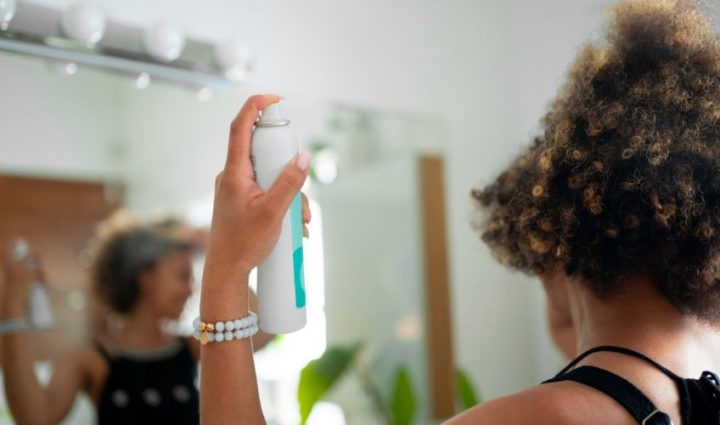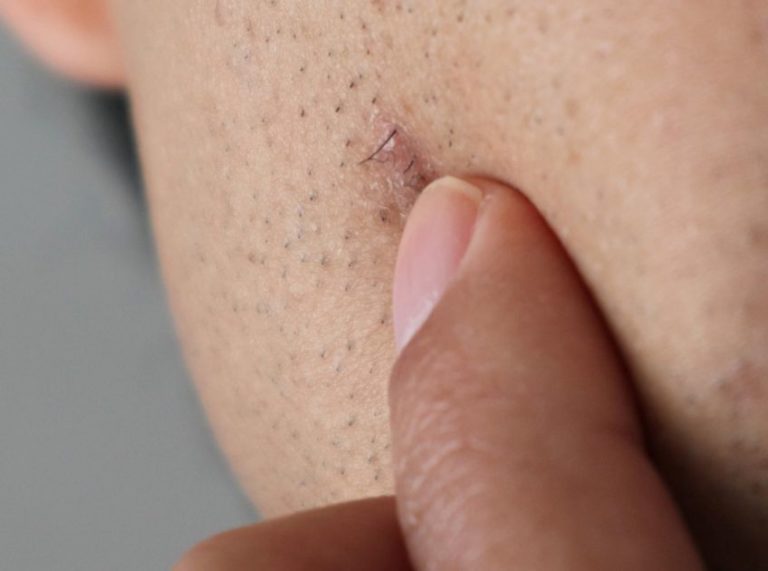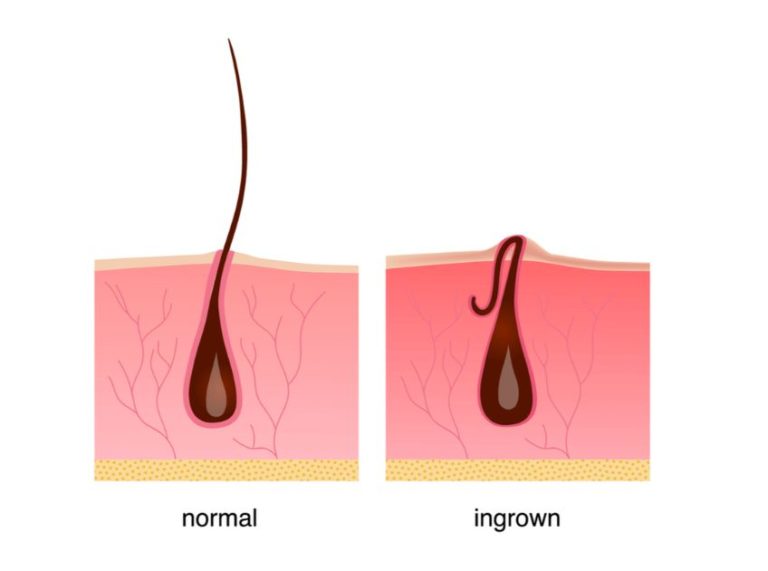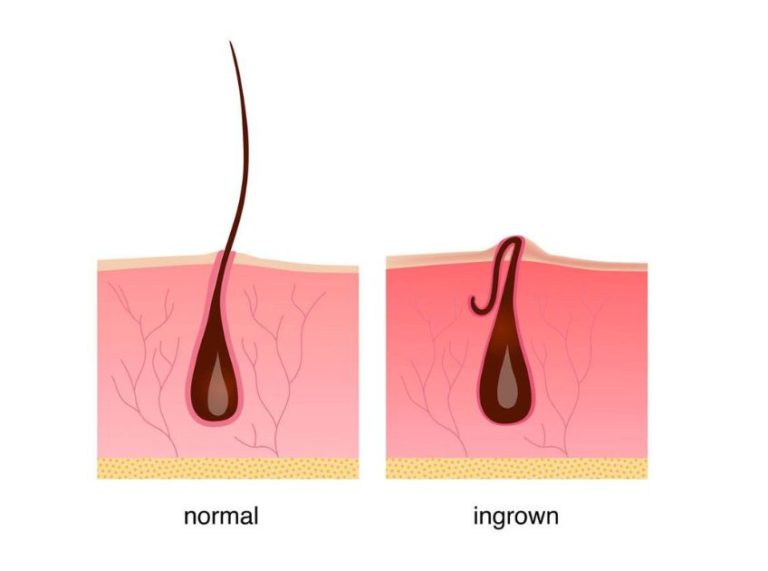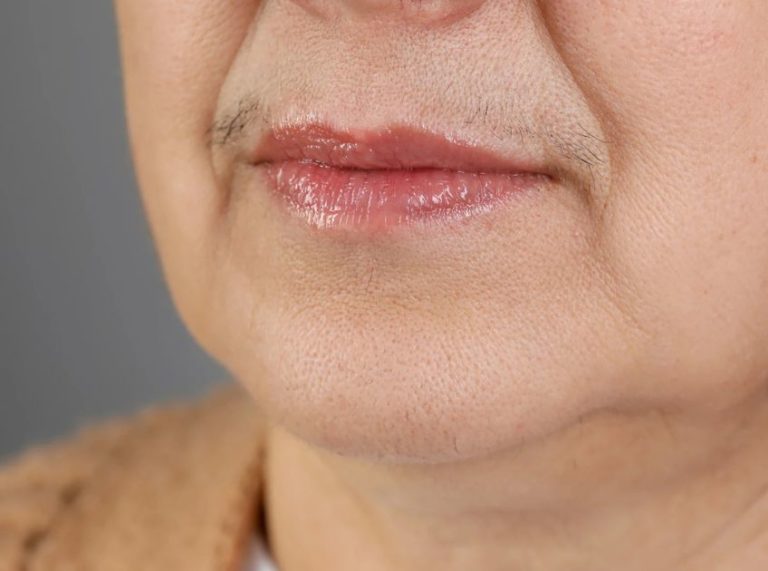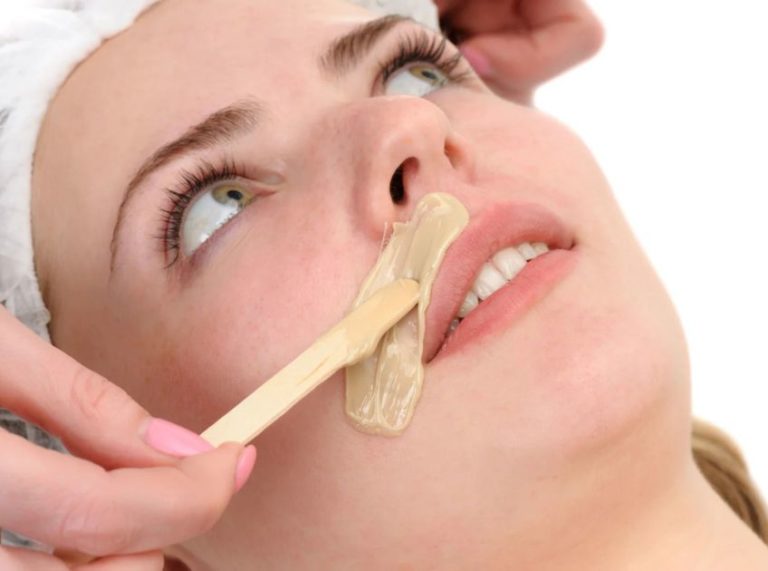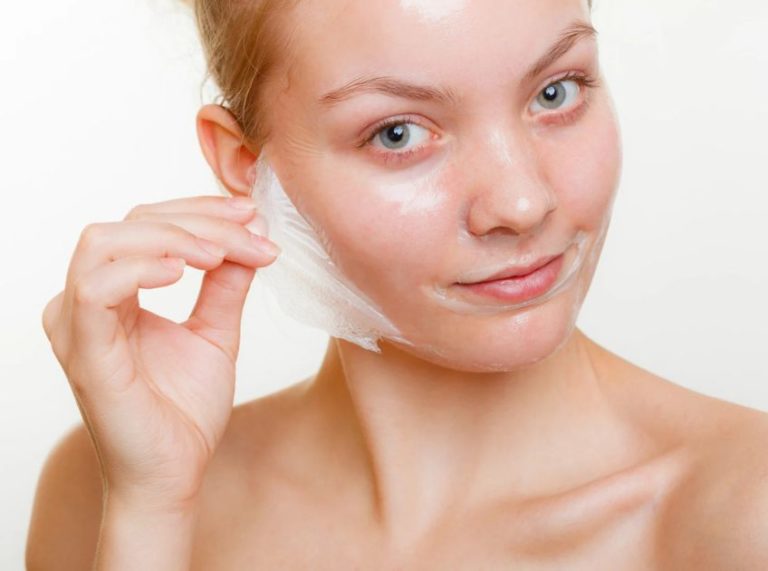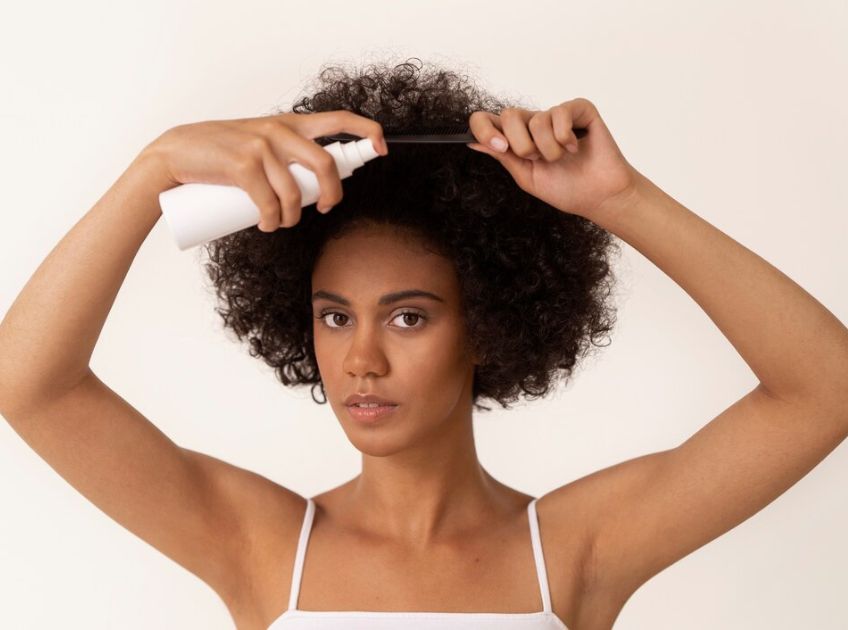
Important: This article is for informational purposes only. Please read our full disclaimer for more details.
Dry shampoo is a popular hair-care product designed to absorb excess oil and refresh hair without water. For Black hair, which tends to be drier and more textured, using the right type and technique is key. With careful application, dry shampoo can extend wash days and maintain scalp health without stripping moisture.
Can You Safely Use Dry Shampoo on Black Hair?
Yes, dry shampoo can be used on Black hair, but it’s important to choose formulas that cater to textured strands. Black hair often needs extra moisture, so opt for a lightweight, residue-free dry shampoo or one specifically designed for curly and coily textures.
When selecting a dry shampoo for Black hair, consider:
- Formulation: Choose sulfate-free, residue-free options or products designed for textured hair. Look for ingredients like rice starch or natural clays that absorb oil without dehydrating the scalp.
- Color Match: White residue can be more visible on darker hair. Tinted dry shampoos or clear sprays are better choices to blend seamlessly.
- Moisture Balance: Opt for dry shampoos with nourishing additives such as aloe vera or lightweight oils to help maintain hydration while reducing excess oil.
- Frequency: Use it sparingly, no more than once or twice a week, to prevent buildup on the scalp and maintain hair’s natural moisture balance.
Insight: A review in the Journal of Dermatology notes that textured hair is more prone to dryness and breakage due to fewer cuticle layers and higher porosity in some types (1)(2). This means oil-absorbing products like dry shampoo should be balanced with hydration to keep strands healthy.
How to Apply Dry Shampoo to Textured Hair
Applying dry shampoo correctly makes all the difference in maintaining the health and appearance of Black hair.
Step-by-Step Guide
- Start with dry hair: Dry shampoo is designed for dry hair. Applying it to damp strands can cause clumping and uneven absorption.
- Section your hair: Use clips or your fingers to divide your hair into small sections. This step is crucial for curly, coily, or thick textures to ensure the product reaches the scalp where oil tends to accumulate.
- Apply to the roots: Hold the bottle or spray about 6–8 inches away and focus the dry shampoo directly on the scalp rather than the lengths. For powder versions, lightly sprinkle along the partings.
- Let it absorb: Leave the product on for at least 2–3 minutes. This allows the starches or clays to soak up excess oil without over-drying the scalp.
- Massage gently: Use your fingertips to work the product into the roots. For tighter curls or coils, avoid aggressive rubbing—light patting and massaging will do.
- Distribute evenly: For spray dry shampoos, use a wide-tooth comb or shake out with your fingers. For powders, you can also use a soft brush to blend and avoid visible residue on dark hair.
- Moisturize if needed: If your hair feels dry after application, mist a lightweight leave-in conditioner on the lengths or dab a small amount of oil on the ends to restore balance.
Pro Tips
- For protective styles like braids or twists, apply dry shampoo along the scalp lines only and massage gently to avoid frizz.
- Tinted or clear formulas work best for Black hair to avoid white residue, especially on darker shades.
- Avoid applying too much at once; you can always add more if needed. Overloading the product can lead to scalp buildup and clogged follicles.
Expert Backing: According to a report in the International Journal of Cosmetic Science, proper distribution of dry shampoo on textured hair helps prevent product accumulation that can interfere with scalp health and hair growth (3)(4).
Using Dry Shampoo with Heat Styling
If you use heat tools on Black hair, dry shampoo can help extend the time between washes and blowouts. However, always follow these steps to maintain hair health:
- Apply dry shampoo before heat styling to absorb oil without burning residue onto strands.
- Keep heat tools at a moderate temperature to avoid moisture loss.
- Combine with a heat protectant spray to shield fragile textured hair.
- Avoid excessive heat on already dry sections to prevent breakage.
Research Reference: The International Journal of Cosmetic Science suggests that repeated heat exposure can weaken textured hair’s cuticle layers, making pre-treatment with protective products essential (5).
Frequently Asked Questions (FAQ’S)
1. How often can I use dry shampoo on Black hair?
A. Limit usage to once or twice a week to avoid buildup and dryness on the scalp.
2. Will dry shampoo damage my curls?
A. No, if used correctly and followed by proper moisture care. Avoid overuse, as it can leave the scalp dry.
3. Can dry shampoo replace regular washing?
A. No. Dry shampoo is a temporary fix for oil absorption and should be used between regular wash days, not as a substitute.
Dry shampoo can work effectively for Black hair when chosen carefully and applied correctly. Opt for residue-free, moisturizing formulas and combine them with a healthy hair-care routine to maintain softness and scalp balance. With the right approach, dry shampoo can help you extend styles while protecting the integrity of your natural texture.
